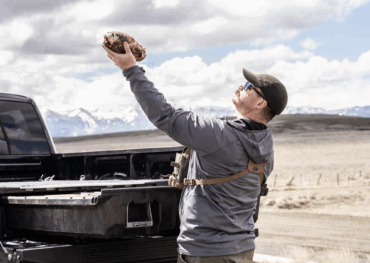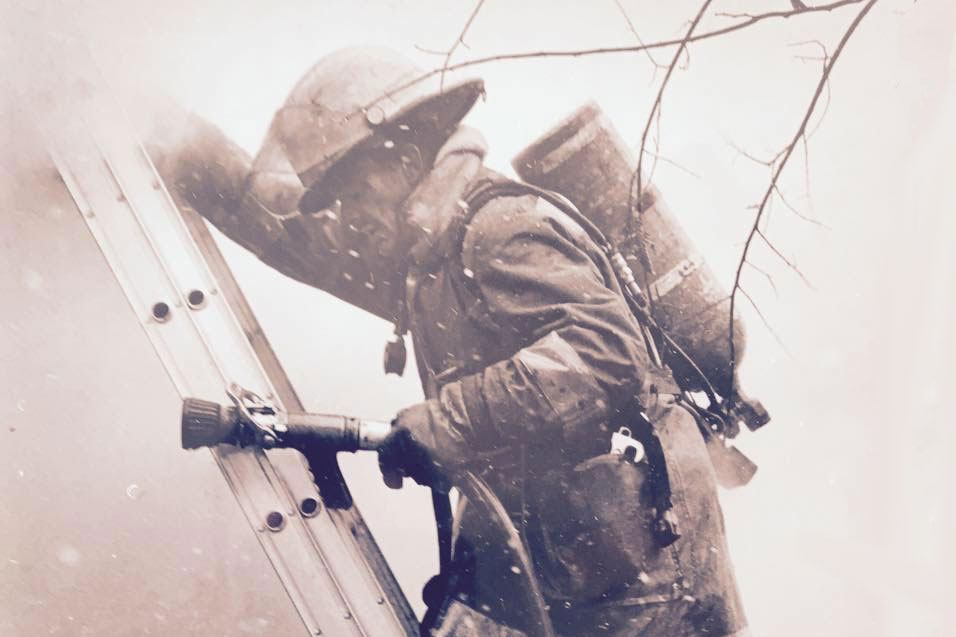You don’t have to be paranoid to be prepared. This primer offers simple, tangible advice so you’re ready for actual emergencies, in the real world.

Let’s get a few things straight. You don’t need to build a bunker in your basement. The “Zombie Apocalypse” thing was cute for a while but it’s not real, and dropping your cell phone in a puddle doesn’t count as an emergency.
This is a primer on emergency preparedness in the real world and by no means a comprehensive guide, but should serve as a good starting point.
Be Prepared
Things Happen. I’ve personally been called upon to respond to traffic accidents, natural disasters, missing children, incidents of violence, pregnant women having car trouble, outdoor injuries (including my own), and myriad other emergencies—big and small.
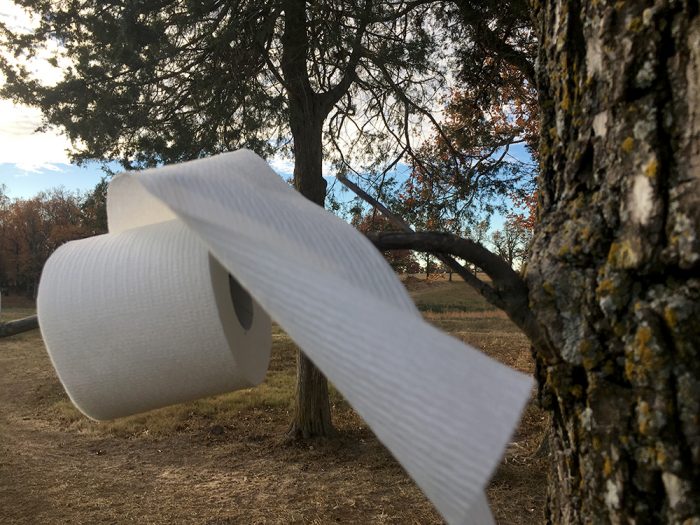
The one thing that all of these shared in common was that there were real dangers that required some level of preparation to mitigate or, hopefully, avoid altogether.
Most everyone will, at some point, encounter a legitimate emergency—either as a participant or as a witness. Preparation may be as simple as keeping your cell phone charged or as complex and intense as going to medical school, but the moment will arise when you have the opportunity to save the day or drop the ball.
Prepping: Getting Started
The first step in handling any emergency is staying calm. If you have exactly the right gear but panic when things go sideways, you’ll have a much harder time thinking through what needs to be done and how best to use what you have.
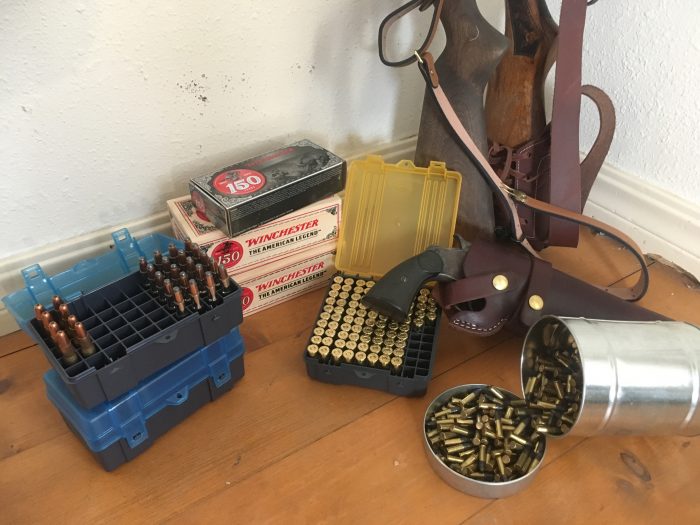
Before anything else, start by developing self control.
Deny yourself something that you crave—not because it’s necessarily bad for you, but as a means of practicing your decision-making skills in the face of an internal urge.
Meditate and practice clearing your mind to focus on one thing that you select, rather than all the stimuli with which we’re constantly inundated. Do hard things—run, jump, climb, lift, work—developing your physical abilities requires the same mental strength that you may have to use in an emergency.
While starting on the mental preparation, you should also work on collecting a few basic items for your pockets, vehicle, and home.
Put These In Your Pockets
In the majority of cases, a cell phone is the most important emergency preparedness item you can carry. It supplements any knowledge, skills, or equipment you may be lacking by providing access to the internet’s vast wealth of information. Use it to call for rescue teams or share your location with friends and family, letting them know that you’re safe.
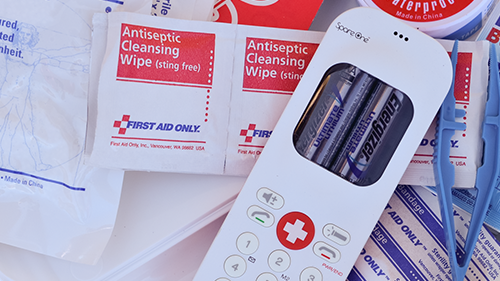
Take pictures for your insurance company after a car accident (mitigating financial dangers) or video for police if you witness a crime (be extremely careful in these cases).
Along with my cell phone, I carry a few other things that have been indispensable in a jam.
- A little cash (card readers don’t always work and there are times when a bribe could keep you alive in some foreign countries, always at least a $20)
- A handkerchief (to use as a bandage or tourniquet, water filter, or packaging)
- A Leatherman Skeletool RX (for auto repairs in a pinch, field stripping a rifle, field dressing an animal, or breaking glass to get in or out of a car or building, cutting seatbelts and cutting kindling)
- A couple Band-Aids (so that a small injury doesn’t become a big emergency due to infection)
- A lighter (for cooking, warmth, cauterization, etc.)
- An emergency contact list (in case I’m the victim, I’d really like someone to let my wife know what happened)
- An organ donor card (so, worst case scenario, I can still help someone else survive even if I don’t)
Put These In Your Car For Emergency
Everybody—regardless of your ability to use them—should carry:
- A first aid kit
- Jumper cables or jump starter battery kit
- Tool box
- A jack and spare tire.

You should also learn to use them but we’ll get to that in a minute. There are links at the bottom to packing lists for your first aid kit and tool box.
For longer trips, or those in bad weather, you should also pack:
- A gallon or two of water (for drinking, washing, or an overheated engine)
- Some backpacking meals (these become very important in case of car trouble or inclement weather)
- A small camp stove and fuel canister (to boil the water to rehydrate the backpacking meals)
- Another lighter (same reason, but nice to have a backup)
- A little more cash (enough to fill the gas tank)
- A [full] gas can (in case you don’t use the cash fast enough or someone else is in need)
- A roll of paper towels (to make a cold compress and for all the normal drying/clean-up uses)
- A small sewing kit (useful for wardrobe malfunctions, shelter production/repairs, and sutures in a pinch)
- A roll of toilet paper (for gastric emergencies)
- A map (because, believe it or not, a GPS is not infallible)
- A rain jacket (to keep you dry and healthy, collect rain water, or block the sun)
- A flashlight (If you don’t carry one, everything will happen at night… mark my words)
- A solar charger (in case you mess up on the “keep your phone charged” bit)
- An empty bladder and a full tank of gas (you can thank me later)
Put These Emergency Items In Your House
Having the right stuff in your abode is much easier than carrying everything you might need with you, but emergency supplies are typically disorganized at best, or often completely overlooked at home.
To cover the basics, you should keep these easily accessible, packed, and separate from your normal-everyday stuff:
- Two gallons of clean drinking water per person
- 72 hours’ food per person (again—backpacking meals and a stove are great)
- A tool box (just duplicate the one in your car to start)
- A first aid kit (expanded from the basics in the car kit to include some larger splints, more and bigger bandages, etc.)
- A week’s supply of toilet paper and paper towels (just trust me on this one)
- More light sources (a couple flashlights, a good headlamp, and some candles)
- Some means of home defense (a gun, a knife, a baseball bat, even an alarm system is a good start)
- A larger reserve of cash (shoot for at least $100)
Put These In Your Brain
As you collect the gear, it might (read: will) be helpful (read: essential) to learn how to use it. Start with some basic skills and knowledge, then build from there. Learn:
- First aid/CPR for adults and children (get certified and stay current)
- To notice the exits (important for natural disasters and human-caused emergencies)
- Basic automotive repair (change a tire, refill the radiator, change the oil, replace the brakes, etc.)
- How to use your home defense tools (take a class and practice regularly)
- A foreign language (in the U.S., Spanish is a great first choice)
- How to cook (yes, it’s an important skill)
- To not be a picky eater (you’d be amazed what’s edible in an emergency)
- How to sew (even just a basic level)
- How to be patient (sometimes waiting is the best choice but it’s also incredibly difficult)
The Next Level Emergency Prep
Beyond the basics, there are near-infinite skills, tools, facts, and abilities you can develop to better prepare for emergencies. As you learn and collect gear, you’ll find some things that are a great fit for your natural talents and some that are just interesting enough to suck you in. I’ll leave you a bit of philosophy and a list of follow-up skills that you may want to pursue.
Emergencies are very rarely solo experiences these days. Arrogance and selfishness only make things worse but you do have to make sure your basic needs are met before you can help someone else effectively. Take that how you will and help others in need wherever and whenever you’re able.
To expand on your newly developed skill set, you may want to consider:
- Learning to tan leather
- Getting your WFR/WEMT Certification
- Getting certified as a lifeguard
- Collecting rescue climbing gear
- Taking a tactical driving class
- Getting a pilot’s license
- Researching your local edible plants
- Learning how to butcher an animal
- Learning more advanced automotive repairs
This article was sponsored by Leatherman. Check out their line of multi-tools here.



